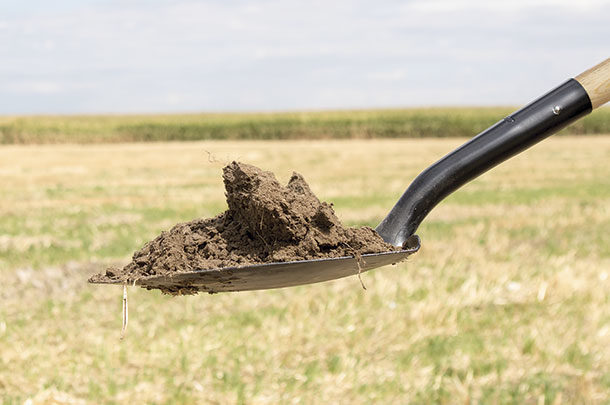What may come as a surprise to some, however, is that physical properties of the soil are included as well. Many people are familiar with a primary physical property: the amount of sand, silt and clay that are present. Otherwise known as soil texture, this information is important, but only scratches the surface of what soil physical properties can really tell us.
Soil texture is kind of like our family – we don’t get to choose it. What we have is what we have, and only through properly understanding it can we make the most of it. Soil texture is the basic building block that should be used when we decide upon management strategies for our fields.
From this one measure, we can approximate the soil’s water-holding capacity, cation-exchange capacity, drainage class and several other parameters that can be used to tweak fertilizer rates and timing, make irrigation decisions and supply the means for other important operational functions.
Soil texture will also indicate how weather conditions at harvest could impact the future crop. I know that you’re among the lucky folk who have always had perfect weather for harvest, but I’ve heard of some who are not so lucky. It’s important to know the potential unintended consequences of harvesting wet ground so that we can make impactful decisions.
Let’s take a minute to look at silage harvest from the perspective of the soil. In the early fall, under a green canopy of corn, the soil is likely to be moist and relatively cool. This is the perfect condition for soil compaction. The primary damage will be caused by wheel traffic.
Assuming the weight of a typical self-propelled chopper is 25,000 pounds, and the footprint of each tire is 24 inches by 24 inches, a pressure of roughly 11 pounds per square inch (PSI) is pushing down on the soil. This, however, is not the main culprit. A fully loaded 18-wheeler can cause much more damage.
With tires that are roughly 8.5 inches wide, these rigs have a total footprint of about 920 square inches. That means a fully loaded (80,000-pound) rig will exert a whopping 87 PSI on the surface of the soil. While this may not seem like a lot, it can cause serious problems under the right conditions.
Soil compaction is the main concern when discussing wheel traffic. When harvest conditions are good (soil is moist but not saturated), a soil’s vulnerability to compaction is influenced primarily by the soil texture. As the amount of sand increases, the susceptibility to compaction decreases to a point. However, soil moisture also plays a huge role when it comes to compaction.
The water in the pore space provides a means of lubrication when crushing the soil structure, allowing particles to move more freely, thus allowing the pressure to travel deeper into the soil profile. The irony in this is soil textures that are more susceptible to compaction (higher percentages of silt and clay) are also the soil textures with a better water-holding capacity. It’s a compaction double whammy.
Soil compaction is nothing new to the industry. It’s widely known that compaction is detrimental to crop production, so there is no need to belabor that point. Soil compaction is also unavoidable. How do farmers cultivate and harvest crops without driving in a field? The key is to have a plan.
Knowing your soil’s texture will help. In fields particularly susceptible to compaction, there are a few things that can help minimize the problem. First, try to establish a traffic pattern in the fields. Studies have shown that the first pass of wheel traffic causes the majority of the damage. By establishing driving lanes, the compaction can be confined to a relatively small portion of the field.
If the compaction is limited to the plow layer, it can be largely corrected through tillage. As mentioned before, a wet soil will allow the pressure to travel deeper through the profile. The University of Minnesota Extension has an excellent technical bulletin on soil compaction that clearly shows exactly how soil moisture increases compaction at depth. If at all possible, soil moisture should be taken into account when deciding a harvest date.
While this is not always practical, it can pay dividends. When compaction below the plow layer begins to cause yield limits, corrective action can be expensive. These actions include increased fertilizer rates and deep soil ripping.
In the end, growers need to harvest when the time is right for making good forage. While soil conditions may not be ideal, planning ahead and properly preparing can ensure that tillable fields yield high-quality forage for years to come. ![]()
PHOTO: We know driving over fields with heavy harvest rigs can cause compaction; soil textures, however, play a very large part in how wheel traffic affects soil. Photo by Mike Dixon.

-
Dustin Sawyer
- Laboratory Director
- Rock River Laboratory
- Email Dustin Sawyer












